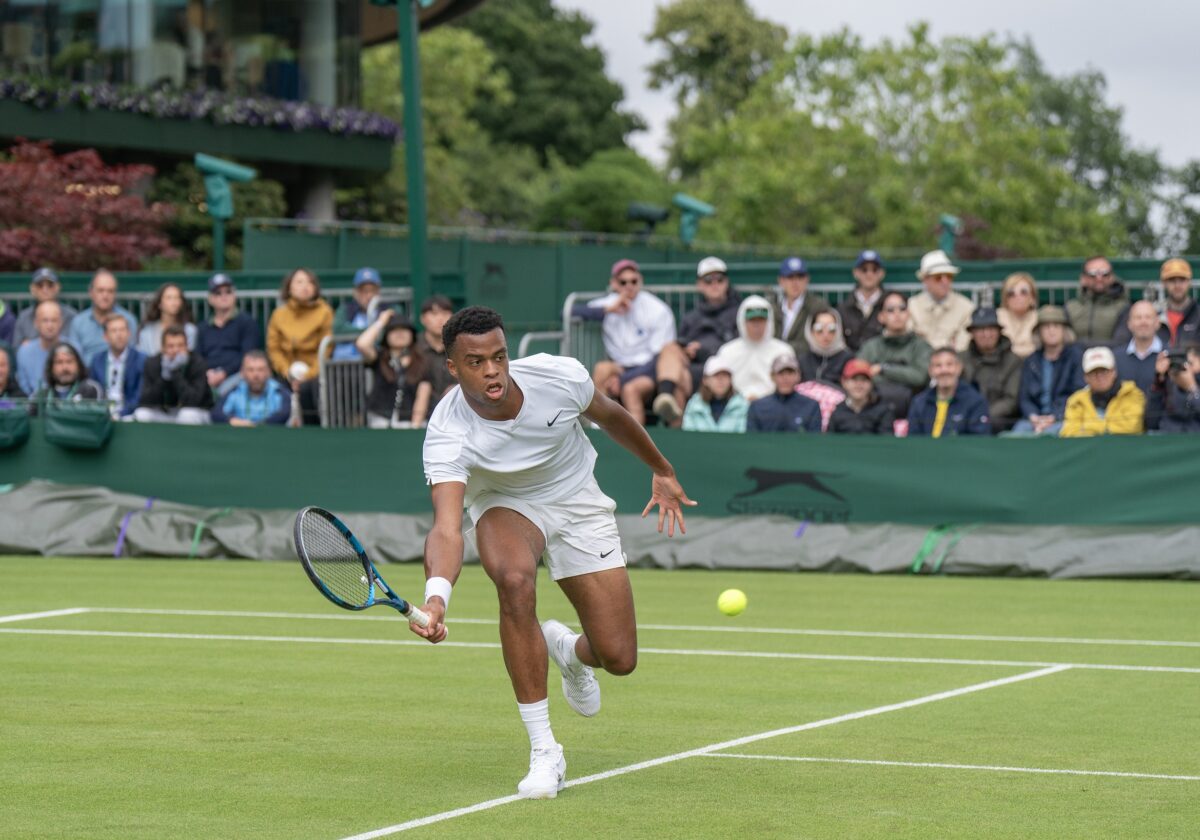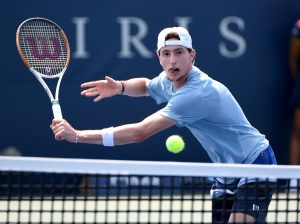The evolution of tennis has brought a wave of players who dominate with powerful serves. Yet, few have redefined the big-server game quite like Giovanni Mpetshi Perricard. Known for his towering stature and explosive serves, Perricard has not only made his first serve a weapon but has also rewritten expectations by adopting a high-velocity second serve—a bold choice that is paying off. This approach sets him apart from the norm, even among other big servers, and has been a key factor in his recent success.
The Speed Behind the Serve: Going Big, Twice
For most players, the second serve is typically a more cautious shot, sacrificing speed for higher spin and accuracy to minimize double faults. However, Perricard’s approach is anything but conventional. His first serve averages around 138 mph, placing it in the elite category for power. Yet, the remarkable part of his strategy lies in his second serve, which he hits at an average speed of 131 mph—significantly higher than the norm for a second serve and closer in velocity to his first.
This decision to go big on the second serve bucks traditional wisdom and puts immediate pressure on his opponents. It forces them to return under the same stress they feel against his first serve, limiting their opportunities to exploit a weaker shot. The sheer speed of his second serve often results in either outright points or weak returns, allowing Perricard to dictate play from the first ball.
How Perricard’s Approach Differs from Other Big Servers
While big servers are known for their power, they typically maintain a stark speed gap between their first and second serves. Players like John Isner, Reilly Opelka, or Ivo Karlovic—classic examples of big servers—prioritize accuracy and spin on their second serve, often averaging 15-20 mph slower than their first serve to reduce double faults and increase reliability. Perricard’s choice to close this gap is unusual, and it brings both risks and rewards.
One of the key distinctions is that, with his high-velocity second serve, Perricard assumes a degree of risk that other big servers avoid. However, his confidence in his serve’s accuracy and power gives him an edge, as he can use the second serve to sustain his aggressive style rather than fall back into a defensive posture. This strategy keeps opponents guessing and prevents them from adjusting their positioning or approach between serves.
Key to His Success: Confidence and Control Under Pressure
Perricard’s success with this strategy relies heavily on his control and mental resilience. Going big on a second serve requires immense confidence, especially under high-pressure situations like break points. Unlike others who might choose safer placements in those monents, Perricard maintains his aggressive approach, signaling that he won’t compromise even when the stakes are high. His ability to trust in his serve has won him countless points and kept him competitive even against elite returners.
Additionally, his big second serve enhances his overall game by allowing him to follow up with strong groundstrokes. Since his second serve often yields short or defensive returns, Perricard can dictate play early in the point, reducing the wear and tear of long rallies—a significant advantage for any big server. This approach not only plays to his strengths but also saves energy, allowing him to remain potent deep into matches.
A New Template for Future Big Servers?
Perricard’s innovative approach is challenging the norms of what a big server can be. By pushing the boundaries of the second serve, he’s creating a new template that could influence future generations of big servers. While it requires a unique combination of power, precision, and mental toughness, his success shows that the conventional gap between first and second serve isn’t a necessity.
In an era where returners have adapted to even the hardest servers, Perricard’s strategy could be a glimpse into the future of the power game. If he continues to perfect this approach, his influence may encourage other players to experiment with a more aggressive second serve, changing how we define—and play against—the sport’s biggest servers.
Main Photo Credit: Susan Mullane-USA TODAY Sports






